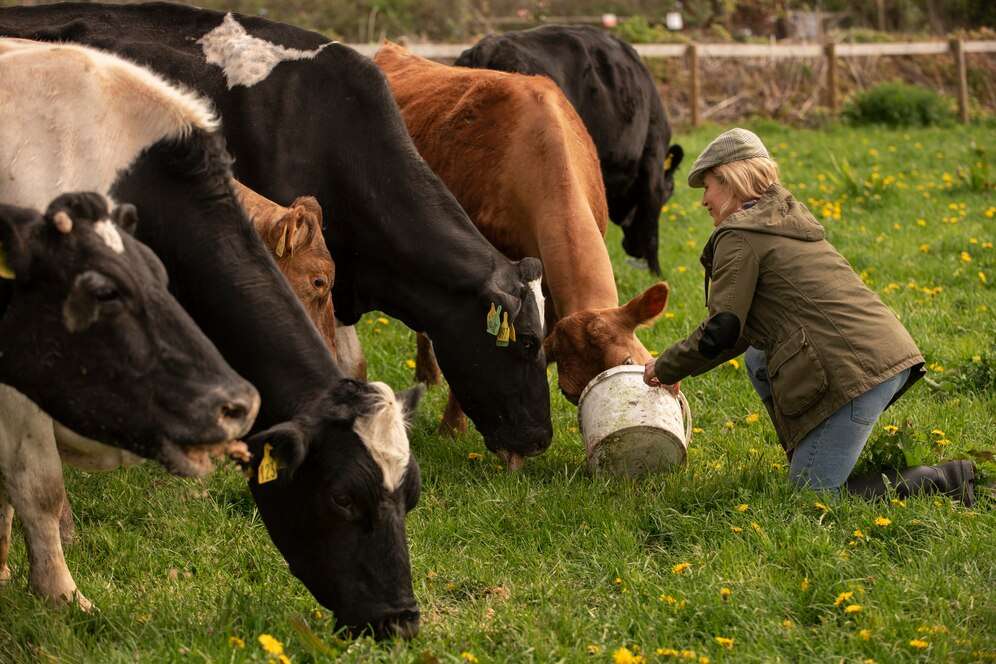BY KAHA GEDI
“You are what you eat,” as the famous saying goes. This quote is well known around the world as a connection between the food you eat and your well-being, and it tells us to be careful of what we are putting in our bodies as it will have consequences, no matter how positive, or negative. What if it goes even further? What if you are also what your food eats? This idea is gaining popularity as scientists find out how the diet of cattle affects the quality of the beef we consume.
A recent study from Michigan State University (MSU) showcases how what cattle eat changes the nutritional value of their beef. Professors Jenifer Fenton and Jason Rowntree, leading researchers in food science and sustainable agriculture, found that cattle diets can influence the levels of healthy fats and other compounds in beef in significant ways.
“Healthy soils equal healthy land, and healthy land equals healthy plants, animals, and people.”
Grass vs. Grain: What’s in your beef?
Most people think of beef as just beef, but there’s more to it than that. The MSU researchers confirmed that grass-fed beef tends to have more heart-healthy omega-3 fatty acids, and a better balance of omega-6 to omega-3 fats. In contrast, beef from grain-fed cattle to those who are fed: corn, soy, or other grains, often has much higher omega-6 levels, which can add to inflammation and increase disease risk.
This variety poses an important question: How can consumers be sure that beef labeled as “grass-fed” is truly different? The study found that analyzing the fatty acid composition of beef can help determine what the cattle were fed. This could lead to better ways to verify grass-fed beef claims by companies.
Testing what cattle eat
To understand how different feeds impact beef, the MSU team studied four groups of cattle:
- Pasture + hay
- Pasture + baleage (fermented hay)
- Pasture + soybean hulls
- Confinement + baleage + soybean hulls
From the data, the team could predict what each group was fed with accuracies of 100%, 50%, 41%, and 97%, respectively. Hay-fed cattle being the easiest to identify, suggesting hay is a reliable supplement for maintaining the nutrient profile of grass-fed beef.
Why does this matter?
For farmers, this research provides important insights into how feeding choices impact beef quality. For consumers, it reinforces the idea that not all beef is the same. Understanding these differences can help people make informed choices about what they eat.
The research also shows a bigger picture: healthy soil leads to healthy plants, which leads to healthier animals and, ultimately, healthier people. As scientists continue studying the link between cattle diets and human health, the saying “You are what you eat” needs an update: You are what your food eats.
REFERENCES:
https://u7061146.ct.sendgrid.net/ls/click?upn=u001.gqh-2BaxUzlo7XKIuSly0rC13Gt2dqhwDt1kaMXpcVMYmGGg-2BOdoXolwXvm5-2BexfmK-2BH2Q5tQT5NL-2FFwV66gKnK3piw-2BBnoaIHcklXZyty3hSZzsv7pJvOGBFwi53zK44h6obSZzlyxBcBXFJe6LU6iXY-2BWQPRRo2hHZ-2B36FcPzNYnH1mzfwMWJj4O2myNFQcu-2BTRMhvQ3mUl0wOdxNLTqOg-3D-3DUw5i_Q89h1K-2FHo2fXv8uCa0T1ghfjDsMdJOBoQ-2Brj0q6nUvPv3FB55dJM-2FVDI1sG8-2F8zY16Ku1yZ2VtsNdguoNCCqKzkDV7-2F0JRj2m-2FVLTXT1GbKLRvST1as-2BynXBmy4VBbqZ3FvVVLlTqkShm0ygphr0aAr4I-2BvvUnLmi327obGSpbjzJlI1R3-2F2DdtRXc3IjaaecnO-2BYqrVBmh-2B21T9u5grEZqotfPtDrBdVXrJ8BjT9qUsjfxYYSwwGhxox5h7GT1WydSj8ZSO80qcagkjatcSF4Hh2EqEL8suwCLf-2BQo5c7g6Ho1j22YtNrizosm1eAHBfDHP-2BpYPGK-2BJf6dV2Mldqg-3D-3D

